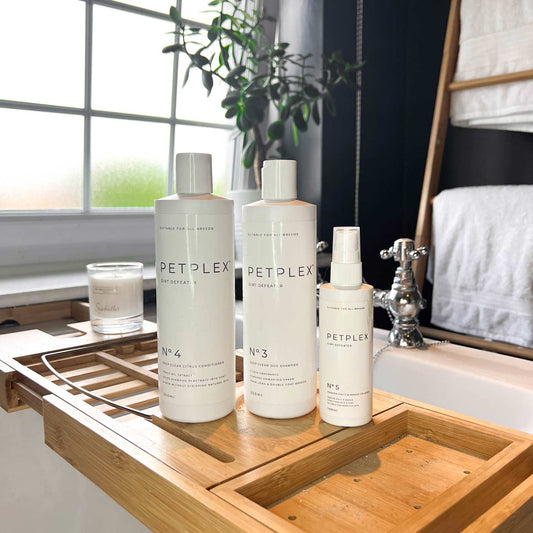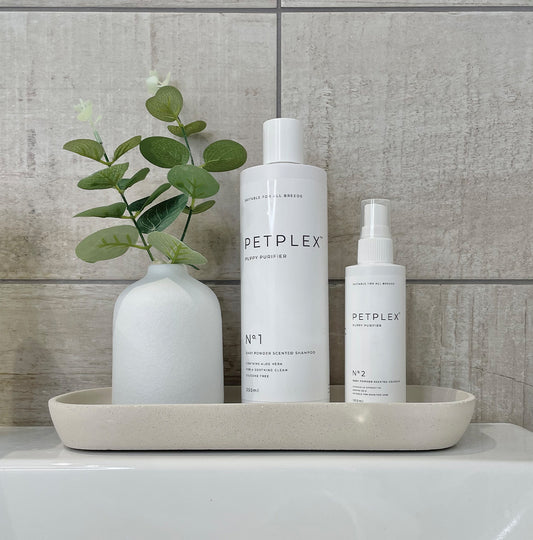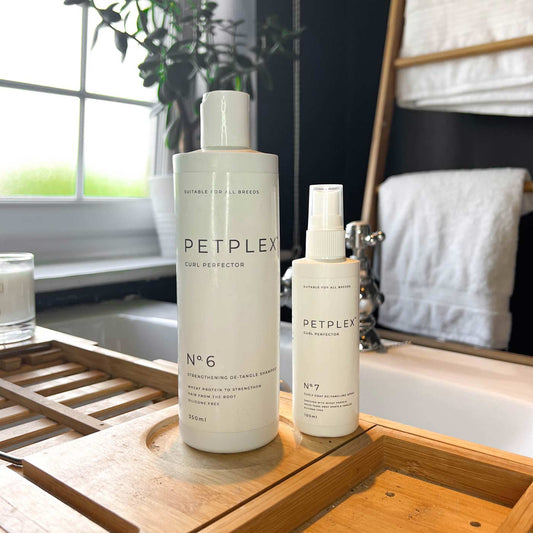We all know our canine companions can get into all kinds of mess! Whether it’s a wet and sandy run on the beach, or a muddy walk in the countryside, some dogs just attract dirt. After all, rolling around in the mud is fun right?! Even if your dog doesn’t particularly get dirty on his routine walks, you should have some kind of bathtime routine for him. Here we thought we’d take a look at a few doggy bathtime tips and suggest a few products that will make bathing your dog a breeze rather than a chore!
Doggy Bathtime – How Often Should I Bathe My Dog?
There are a few factors to take into account when deciding how often to bathe your dog. The condition and health of their skin and coatis paramount. Washing too frequently could strip the natural oils.
A monthly bath for most dogs is plenty; a little more often if your dog has an oily coat. Many short haired breeds may need bathing even less and those with water repellant coats such as golden retrievers should be bathed less to help preserve the natural oils.
If you have a dog with a thick coat, you may find lee bathing and more brushing more beneficial which will help distribute the natural oils and remove loose, dead hair.

If you’re not sure of your dogs’ coat type, maybe have a word with your vet for some advice. Of course, if your dog loves a roll in the mud then you may need to give him more frequent baths.
Generally, common sense will tell you if your dog needs a wash; if he smells slightly unsavoury, then it’s probably time to get the shampoo and grooming kit out!
Where to Wash Your Dog
Bathing indoors in a sink, bathtub or shower is the best place for most dogs. You could pop an old towel on the floor in the tub to make them feel secure. If your dog is truly filthy you could hose them down outside, but remember dogs don’t like being cold. This is best for the occasional shower in the summer months perhaps or if your dog is so dirty they can’t possibly go indoors!

How to Wash Your Dog
• First brush your dog to remove any knots or matted hair. Wetting knotted hair will be uncomfortable for your dog and can cause irritation. If the mattes won’t brush out, you can try cutting them, or take your pup to a professional groomer.
• Use lukewarm water, a similar temperature to that that you’d use for a human baby.
• Reassure your pet and talk to them in a calming voice.
• Use dog shampoo. Designed specifically for pets, it won’t dry their skin or caot lie human shampoos will.
• Rinse well. Rinse and rinse again! Any soap left on your dog can cause skin irritation.
• Dry at a low temperature. It’s best to either air dry or use a dryer designed for dogs. Human blow dryers trend to be too hot for dogs so be careful if that’s what you intend to use. Use the lowest setting and don’t get too close to the body.
• Reward your dog. For many dogs, bathtime is a chore and not that fun. Give plenty of praise and when its all over offer them a treat.
Take your Pup to a Dog Groomer
If the thought of bathing your dog yourself is too much then a trip to the dog groomer might be the best option. They will have all the tools and training required to give your pup the pampering they deserve and will know how to handle more nervous pets. The other advantage is that groomers will clip nails and trim difficult areas such as the eyes.
A trip to the groomers is essential for long haired breeds such as Maltese and Poodles, who will need their hair trimming. Hair doesn’t stop growing and doesn’t shed like fur.
Shampoos for dogs
At Lords & Labradors we stock lots of shampoos for dogs but our go-to is PetPlex. Designed specifically for your pets needs, the grooming range i of professional grooming standard with 100% pet safe ingredients. There is a shampoo for every coat type and condition; from Derma Doctor for dogs with extra sensitive skin to Puppy Purifier designed specifically for little pups.
Bathtime Accessories
We have a number of bathtime accessories too. Grooming tools from Ancol will prepare for your dog’s bath and how about a fragrance from PetPlex to add the finishing touch when bathtime is over?
Our Bamboo drying mitts and coats are also super popular, making drying your dog so much easier than wrestling them with a towel!
If you have any questions about our blog do get in touch. Equally, we’d love to hear your bathtime stories or any tips you might have that make bathing your pets easier.

































































































